New Jersey is known for its proximity to New York, numerous state and national parks, coastal towns, and more. However, the state is called The Garden State because its economy once primarily depended on agriculture due to its long growing season. New Jersey actually has all four seasons — a true spring, summer, fall, and winter. Leaves change color during the fall, and it is noticeably colder. Winters are freezing with lots of snowfall, spring is crisp and fresh, and summers are hot and humid. But what is the hottest temperature ever recorded in New Jersey? It was an epic scorcher!
The Hottest Temperature Ever Recorded in New Jersey
On July 10th, 1936, New Jersey recorded its hottest temperature on record in Runyon, a whopping 110 degrees Fahrenheit! In fact, in 1936, North America experienced one of the most severe heat waves in history. It occurred during the Great Depression and caused terrible human suffering and further damage to the struggling economy. Due to a lack of moisture, large numbers of crops were destroyed, and around 5,000 lives were lost during the heat wave. New Jersey was not the only state that recorded record-high temperatures that summer. However, many of the 1936 records were shattered during the North American heatwave of 2012. But temperatures in the Garden State never exceeded 110 degrees, so why did Runyon get so hot that day and never again?

The neighborhood of Runyon in Sayreville, New Jersey, has an average summer temperature of approximately 84 degrees Fahrenheit.
Image: ungvar, Shutterstock
©ungvar/Shutterstock.com
Runyon Average Summer Temperature
The neighborhood of Runyon in Sayreville, New Jersey, has an average summer temperature of approximately 84 degrees Fahrenheit. Runyon has a humid subtropical climate, with hot summers and cold, snowy winters. Its average winter temperature is about 25 degrees Fahrenheit, with around 15 inches of snowfall each season.
Runyon has mild summers compared to warmer states, so what was the reason behind New Jersey’s hottest temperature ever recorded? Unfortunately, the area was experiencing a prolonged drought, which accentuated the heat in the region, causing one of the most severe heat waves in North America’s history.
New Jersey’s Average Summer Temperature
Many people flock to New Jersey’s shores during the summer to enjoy its hot and humid weather. Summer in the Garden State lasts for three months; in June, the temperature rises to 82 degrees Fahrenheit. However, July is the state’s hottest month, with temperatures often soaring over 86 degrees Fahrenheit. One of New Jersey’s main attractions is Atlantic City, which is usually 3 degrees hotter than areas farther from the coast. Luckily the state lies off the ordinary tornado paths, so while it does experience thunderstorms, hurricanes are extremely rare.
Animals From Around the World That Can Survive Extremely Hot Temperatures
While many animals can survive in warm temperatures, there are only a select few that can thrive in extremely hot climates. They include:
Camel
Everything about the camel equips it to live in dry, hot, and arid areas where food and water are scarce. While many people think camels store water in their humps, their humps actually store fat, which the camel can draw nourishment from when in need. Furthermore, they can drink over 20 gallons of water at a time. As a result, camels can go up to seven days without needing to drink water. They are able to retain a lot of water due to their organs and oval-shaped red blood cells.

While many people think camels store water in their humps, their humps actually store fat, which the camel can draw nourishment from when in need.
©Shengyong Li/Shutterstock.com
Desert Tortoise
The desert tortoise occurs in northwestern Mexico and the southwestern U.S. These tortoises can survive temperatures over 140 degrees Fahrenheit because they burrow into the sand, escaping the heat. They spend around 98% of their lives in burrows, only coming out to forage for food and mate. While desert tortoises can survive extreme heat, they also live for up to 80 years in the wild, which is an amazing achievement.
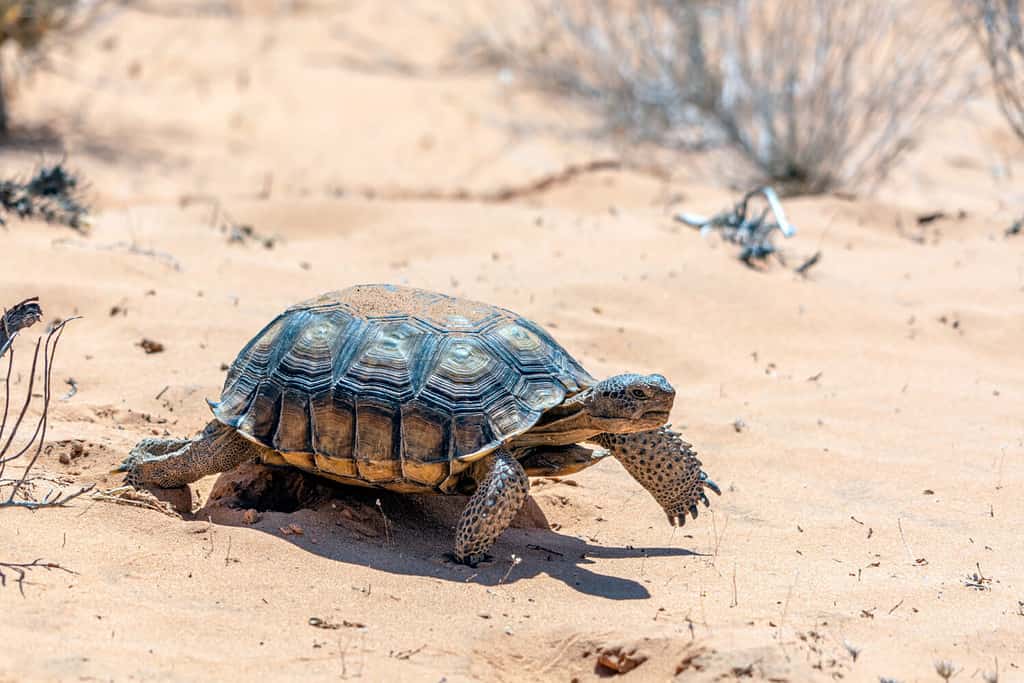
The desert
tortoise
occurs in northwestern Mexico and the southwestern U.S. These tortoises can survive temperatures over 140 degrees Fahrenheit because they burrow into the sand, escaping the heat.
©Gchapel/Shutterstock.com
Sand Fox
The sand fox occurs in the deserts of the Middle East and North Africa. Therefore, it survives in some of the harshest areas of the world. However, they are fully equipped to live in these sweltering temperatures. For example, they have fur on their feet, allowing them to walk on scorching hot sand. Furthermore, their bodies are able to retain and preserve water. Researchers discovered this fact when sand foxes’ urine was tested and yielded low levels of water. In addition, they have low metabolisms and small bodies, which require less energy. Lastly, these foxes hunt at night, once the heat subsides.

The sand fox occurs in the deserts of the Middle East and North Africa. Therefore, it survives in some of the harshest areas of the world.
Image: Haifaa Abedalhaleem, Shutterstock
©Haifaa Abedalhaleem/Shutterstock.com
Jerboa
This strange creature looks like a mixture of a mouse and a kangaroo. Jerboas have long hind legs that allow them to move quickly and efficiently. However, they are even better at digging into the sand to hide from the heat. They can also survive in low-water conditions like the Asian and African deserts. They can live off moisture obtained from the insects and vegetation they eat.
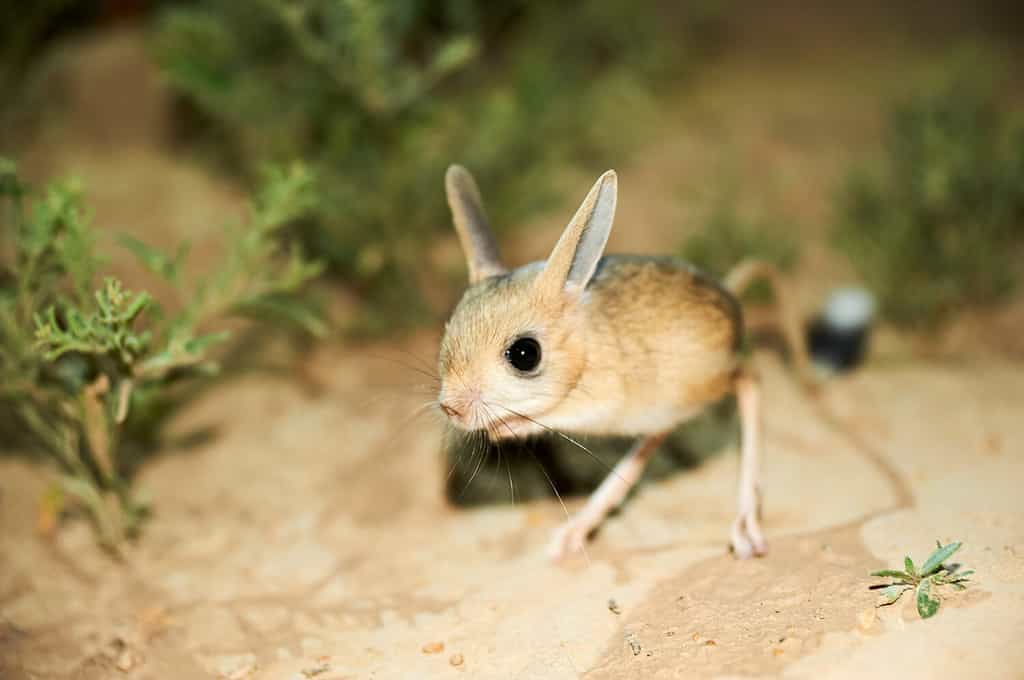
Jerboas have long hind legs that allow them to move quickly and efficiently. However, they are even better at digging into the sand to hide from the heat.
©Yerbolat Shadrakhov/Shutterstock.com
Greater Bilby
Another animal that can survive in arid environments is the greater bilby, which is an Australian marsupial. These savvy creatures burrow deep into the sand to escape the sweltering heat. They have long claws on their front feet that help with digging, but it is also an essential tool for foraging. Greater bilbys’ are similar to Jerboas as they retain moisture from their food.
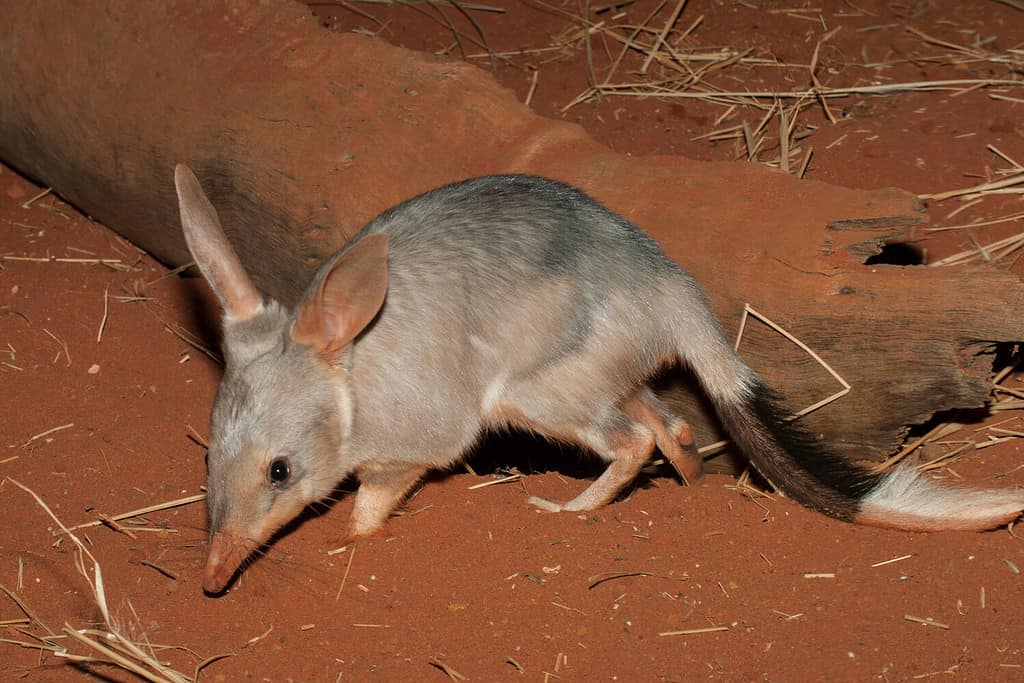
Another animal that can survive in arid environments is the greater bilby, which is an Australian marsupial. These savvy creatures burrow deep into the sand to escape the sweltering heat.
©Ken Griffiths/Shutterstock.com
Ostrich
Native to Africa, the ostrich has thermoregulation techniques to help survive the heat. These techniques keep the ostrich’s body temperature relatively consistent so they don’t overheat. In addition, they use their feathers like a giant umbrella to protect their skin, like built-in shade. They also don’t need to drink water. Instead, they hydrate by absorbing water from the plants they eat.

Native to Africa, the ostrich has thermoregulation techniques to help survive the heat. These techniques keep the ostrich’s body temperature relatively consistent so they don’t overheat.
©iStock.com/slowmotiongli
Saharan Silver Ant
The Saharan silver ant survives in the scorching temperatures of the Sahara desert, which can reach 120 degrees Fahrenheit. However, they differ from most desert-dwelling animals because they forage during the day. They search for food in quick 10-minute intervals, taking breaks in the shade to cool off between expeditions.
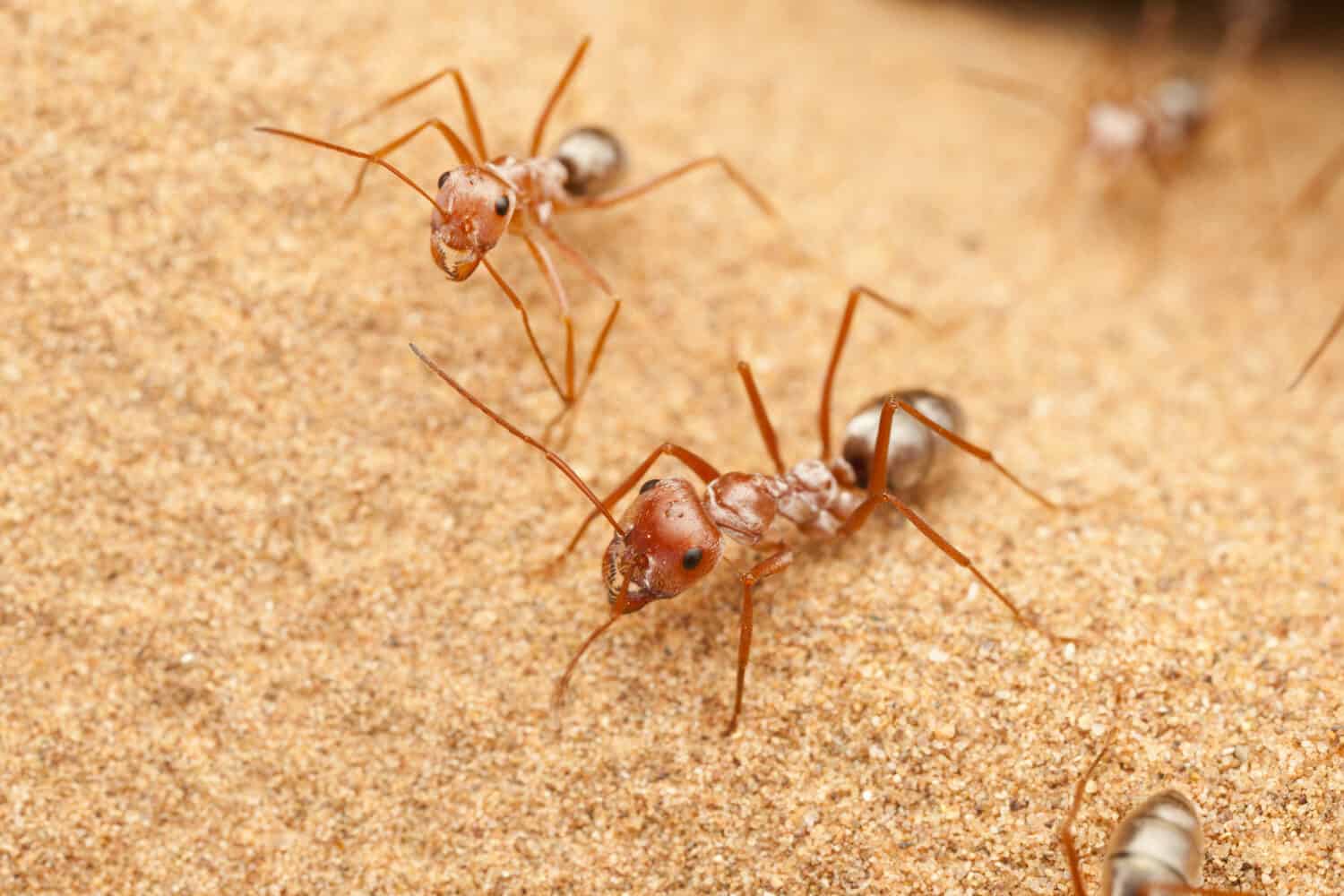
The Saharan silver ant survives in the scorching temperatures of the Sahara desert, which can reach 120 degrees Fahrenheit.
Image: Pavel Krasensky, Shutterstock
©Pavel Krasensky/Shutterstock.com
Water Bear
The water bear is one of the smallest animals that can survive in sweltering temperatures. It might be tiny, but it is hardy. These microscopic organisms live in water and can survive temperatures of 212 degrees Fahrenheit. Furthermore, they can also live in freezing temperatures by going into a type of hibernation, appearing dead. Their metabolism slows, and they dry out but make a full comeback when placed in water. They can stay in this state for decades!
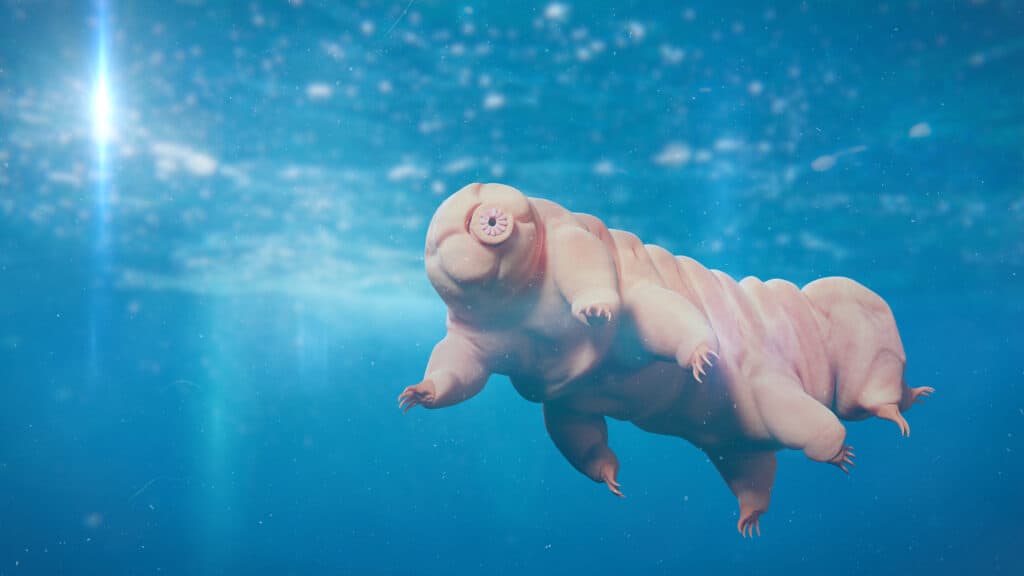
The water bear is one of the smallest animals that can survive in sweltering temperatures. It might be tiny, but it is hardy.
©iStock.com/dottedhippo
The photo featured at the top of this post is © iStock.com/Creative-Family
Thank you for reading! Have some feedback for us? Contact the AZ Animals editorial team.






